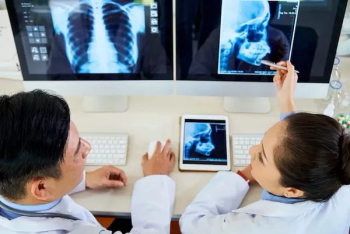
Radiation dose awareness leads to more pediatric referrals for ultrasound and MRI
Efforts to raise awareness about the associated risks of CT-based radiation exposure and the need to keep children from receiving unnecessary scans seem to be achieving traction among healthcare providers, according to a study by Ohio researchers. Their findings suggest that such increased awareness may make referring physicians less likely to order imaging that involves ionizing radiation for young patients.
Efforts to raise awareness about the associated risks of CT-based radiation exposure and the need to keep children from receiving unnecessary scans seem to be achieving traction among healthcare providers, according to a study by Ohio researchers. Their findings suggest that such increased awareness may make referring physicians less likely to order imaging that involves ionizing radiation for young patients.
Debate on the radiation risks of CT to the pediatric population has caught the attention of the mass media while becoming the subject of numerous studies in the medical literature. Radiologists and other physicians have joined nationwide efforts, such as the Image Gently campaign, to keep unwarranted studies from being performed on children.
Administrators at children's hospitals in Cincinnati and Philadelphia recently began noticing a change in the volume of CT studies. Early evidence of what may be an emerging trend led researchers to investigate whether increased awareness of CT radiation safety issues had actually affected utilization, said principal investigator Kevin E. Gessner, an assistant vice president of radiology and medical imaging at Cincinnati Children's Hospital.
Gessner and colleagues analyzed procedural data for CT, ultrasound, and MRI over the past five years at Cincinnati Children's and Children's Hospital of Philadelphia, two of the largest academic pediatric hospitals in the U.S. The investigators confirmed that CT use at the two hospitals was slowing. Overall imaging utilization, however, increased by almost 6% during the five-year period, thanks to increases in orders for ultrasound and MR. Gessner released results of the study at the 2008 RSNA meeting.
Five-year growth rates for MRI, ultrasound, and CT were, respectively 9.8%, 8.6%, and 1.6%. CT volumes, however, have decreased by 3.6% since 2007, while ultrasound and MRI volumes have increased by 8% and 6.3%, respectively.
"We speculate that these trends in part represent the impact of education about radiation risks and a resulting reduction in unnecessary CT examinations and shift to non-radiation-generating procedures," Gessner said.
Findings from a study by Massachusetts General Hospital researchers covering a decade's worth of CT exams seem to confirm this pediatric imaging trend.
Principal investigator Dr. Pragya Dang released results from a review of 634,694 CT scans performed in nearly 200,000 patients from 1996 to 2005. The researchers calculated the number of CT studies per patient, along with patient age and sex, body region scanned, and radiation dose. They used the Monte Carlo system, adjusted for pediatric scans, to estimate effective radiation doses.
Although the investigators found that the number of CT exams increased annually in all age groups, effective individual doses in children went down by 0.01%. Individual doses for adults, meanwhile, increased by 3.61%. Both rate changes were statistically significant. The researchers also found that abdomen and chest scans produce the highest radiation doses in all age groups.
For more information from the Diagnostic Imaging and SearchMedica archives:
Newsletter
Stay at the forefront of radiology with the Diagnostic Imaging newsletter, delivering the latest news, clinical insights, and imaging advancements for today’s radiologists.




